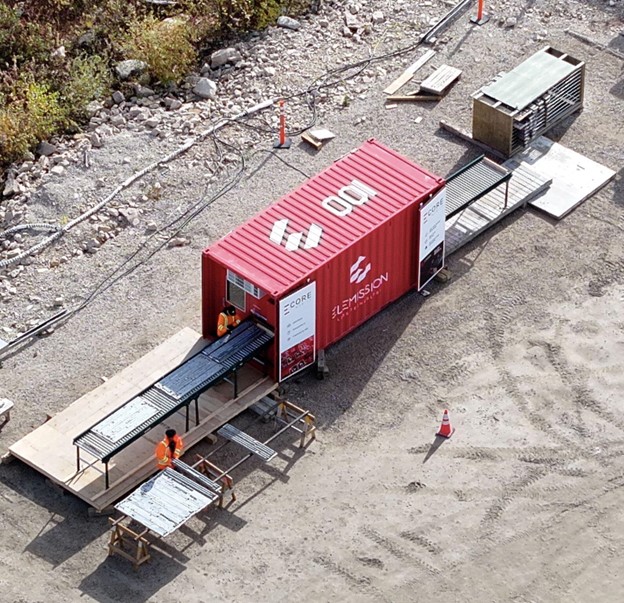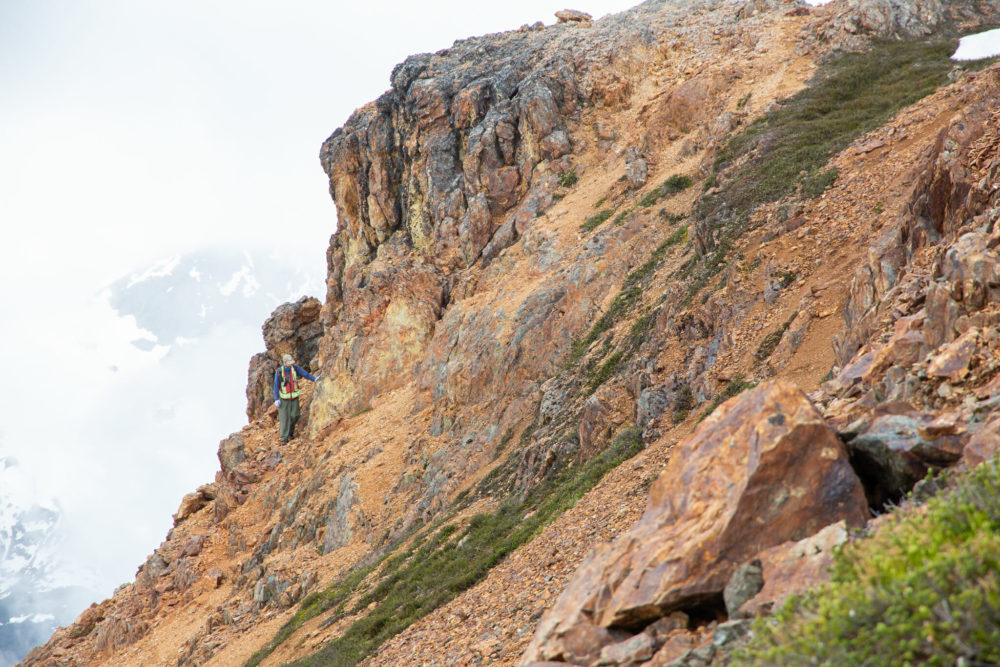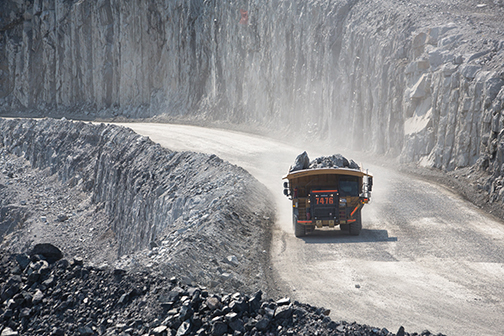Big ideas at CIM plenary
At this year’s plenary session at the CIM Convention in Montreal, many of the challenges that have produced so much hand-wringing in the mining industry over the past several years were discussed.

The panellists from left to right: Renaud Adams, Michelle Ash, Gerald Sanders, and Pierre Lapointe.
Challenges such as lower-grade deposits, declining productivity, volatile commodity prices, an aging workforce, and resource nationalism are well-worn themes familiar to everyone in the industry.
But if the mining sector doesn’t make serious strides in addressing these issues through innovation and technology, the five panellists also touched on possibilities that may be less obvious – including the potential existential threat of new, tech-savvy competition.
“A faster pace may actually be forced upon us by non-traditional competitors that may be superior in technology and data analysis and talent management,” said Daniella Dimitrov, an executive and corporate director with Excellon Resources.
“And they may look at the extractive industry as a secondary industry.”
Gerald Sanders, an aerospace engineer with the NASA Johnson Space Center, cited the example of Google’s intrusion into the automotive industry with its pioneering work on the self-driving car.
“Google is working on self-driving cars, not the automotive companies – they’re working to catch up,” he said. “It’s going to happen, it’s just who is going to be the winner vs. the failure.”
There’s no reason why that can’t happen in the mining industry.
“Mining’s going to occur,” Sanders said. ”Somebody’s going to do the job and somebody’s going to innovate whether it’s the current industry that’s doing it or a new player.”
Over the last 20 years, the mining sector has made huge advances in safety, environmental practices, engaging communities and improving mining processes, noted Renaud Adams, president and CEO of Richmont Mines.
However, there’s a lot more left to do, because in spite of the progress the mining industry has made, grades and productivity have both decreased.
“As we advance, I think the next level of challenge is to truly make innovation and technology part of the DNA – not as a nice thing to do, but a must-do,” Adams said.
“We are the generation that’s going to set the tone for the next ones to come.”
Accelerating rate of change
Michelle Ash, chief innovation officer with Barrick Gold, noted that we are living in a time of an accelerated rate of change – more so than at any other time in history outside of two times: when the zero was invented, resulting in an explosion of mathematics, and during the Renaissance.
“That’s why it’s both exciting and terrifying,” she said. “As leaders, we have to prepare ourselves and our people for change.” Ash cited the way that technology will change the way we think about ourselves.
Before the Industrial Revolution, we thought of ourselves as part of a community.
Since the Industrial Revolution our jobs. That’s about to be upended with the proliferation of robots and artificial intelligence (AI), Ash noted.
Another sign of the fast pace of change has been the disappearance of 52% of companies that were Fortune 500 companies in 2000. “Either they’ve been acquired, merged.p or gone bankrupt,” Ash said, and the list has been taken over by five tech companies.
Technology adoption
In this environment, mining companies have no choice but to adopt new technology at a faster pace, especially as it becomes cheaper.
Ash noted that the biggest obstacle to the adoption of new technology isn’t cost, it’s mindset.
Whereas it used to cost $5,000 for a ruggedized screen to go in a jumbo, an iPad with ruggedized case now only costs $500 or so.
“We have to stop thinking of ourselves as special and start adopting retail products,” she said.
The sector should also re-examine technologies as they become more sophisticated.
“People often say, ‘We tried that 20 years ago and it didn’t work.’ But think about your phone even two years ago,” Ash said.
Ash noted that solar power now can cost as little as 6¢/kW hour, vs. $7/kW hour years ago.
“That’s an amazing change, and now it’s really making us have to wonder why we continue using diesel, especially when you much smaller equipment,” she said, adding battery power has also become more viable.
At the same time, Pierre Lapointe president and CEO of ArcelorMittal Mining Canada noted that the industry must make better use of the technology already at its fingertips, particularly data from operations.
“We’re overwhelmed by data – it’s incredible the amount of data we could have right now to manage a mine,” Lapointe said. “But at the end of the day, the people on the floor that make it happen need clarity and simplicity, so how do we get the tremendous amount of data and bring that to the floor so it will be beneficial for our processes?”
A “VUCA” world
Some of the comments that resonated most deeply with the audience came from Dimitrov, who said we live in a “VUCA” world. Coined by the U.S. military in the 1990s to describe a post-Cold War world, The acronym stands for volatile, uncertain, complex and ambiguous.
Since then, the word (which fittingly enough means “wake up” in the Zulu language), has been applied by business leaders to describe turbulent and rapidly changing business environments.
“Some of you may have heard that these changes have happened in other industries and they’ve been transformative, but they will not happen in our industry because we’re different,” Dimitrov said.
“Well, we are a labour-intensive, highcapital business with challenged decision making processes culminated by manual data collection and analysis in a time of growing resource nationalism and trade friction.”
Dmitrov continued to say that the sector’s margins have declined, it has experienced years of losses and writedowns, and it has created low value outside of times when commodity prices are very high. “This really means we are an industry primed for transformation because these are not passing challenges. As we’ve heard, this is the new reality and this is the new normal.”
The future of mining
So what are the solutions? Dimitrov called for companies to go beyond a one-off investment in technology: “Make it a priority to build a focused strategy and incorporate it in your business,” she said.
In addition, the entire panel agreed on the importance of talent, specifically the need to bring in people who may be quite different from the talent the industry has hired in the past. That may include people from outside the industry who are ready to challenge existing ways of thinking and the perception that mining is special.
Unfortunately, the technology and innovation revolution that is coming will create new challenges, such as reducing the number of jobs in mining, thereby challenging an important strategy mining companies have typically used to obtain a social licence.
“I think we need to turn the conversation with communities and First Nations to how do we create wealth and how do we support wealth creation, especially now a lot of these technologies make remote education very feasible very cheaply,” Ash said.
The conversation about the future of mining is only just beginning, but what is already clear is that the future of mining will look radically different.





Comments